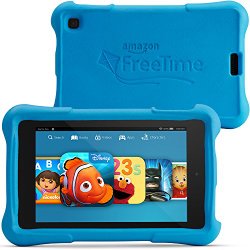A lot of organizations don’t realize how critical how information is stored, retrieved, and utilized.
Information systems (IS) is the study of complementary networks of hardware and software that people and organizations use to collect, filter, process, create, and distribute data.
The study, like Erich Stauffer, bridges business and computer science using the theoretical foundations of information and computation to study various business models and related algorithmic processes within a computer science discipline.
Information systems are focused upon processing information within organizations, especially within business enterprises, and sharing the benefits with modern society.
Computer Information Systems
Computer Information Systems (CIS) – (also known as Management Information System) is a field studying computers and algorithmic processes, including their principles, their software and hardware designs, their applications, and their impact on society while IS emphasizes functionality over design.
The history of information systems coincides with the history of computer science that began long before the modern discipline of computer science emerged in the twentieth century. Regarding the circulation of information and ideas, numerous legacy information systems still exist today that are continuously updated to promote ethnographic approaches, to ensure data integrity, and to improve the social effectiveness & efficiency of the whole process.
There are various types of information systems, for example: transaction processing systems, office systems, decision support systems, knowledge management systems, database management systems, and office information systems. Critical to most information systems are information technologies, which are typically designed to enable humans to perform tasks for which the human brain is not well suited, such as: handling large amounts of information, performing complex calculations, and controlling many simultaneous processes.
Management Information Systems
A management information system (MIS) – (also known as Computer Information System) provides information that organizations need to manage themselves efficiently and effectively. Management information systems are not only computer systems as these systems encompass three primary components: technology, people (individuals, groups, or organizations), and data (information for decision making).
Management information systems are distinct from other information systems, in that they are used to analyze and facilitate strategic and operational activities. Academically, the term is commonly used to refer to the study of how individuals, groups, and organizations evaluate, design, implement, manage, and utilize systems to generate information to improve efficiency and effectiveness of decision making, including systems termed decision support systems, expert systems, and executive information systems.
A management information system gives the business managers the information that they need to make decisions. Early business computers were used for simple operations such as tracking inventory, billing, sales, or payroll data, with little detail or structure. Over time, these computer applications became more complex, hardware storage capacities grew, and technologies improved for connecting previously isolated applications. As more data was stored and linked, managers sought greater abstraction as well as greater detail with the aim of creating significant management reports from the raw, stored data.
Originally, the term “MIS” described applications providing managers with information about sales, inventories, and other data that would help in managing the enterprise. Over time, the term broadened to include: decision support systems, resource management and human resource management, enterprise resource planning (ERP), enterprise performance management (EPM), supply chain management (SCM), customer relationship management (CRM), project management and database retrieval applications.
An MIS supports a business’ long range plans, providing reports based upon performance analysis in areas critical to those plans, with feedback loops that improve guidance for every aspect of the enterprise, including recruitment and training. MIS not only indicates how various aspects of a business are performing, but also why and where. MIS reports include near-real-time performance of cost centers and projects with detail sufficient for individual accountability.

My oldest son likes downloading books and games to read. Books, movies, and TV shows are included in Amazon Prime on the Kindle Fire HD for Kids and parental controls are great.

 How do I add a POP email account in Gmail?
How do I add a POP email account in Gmail?
